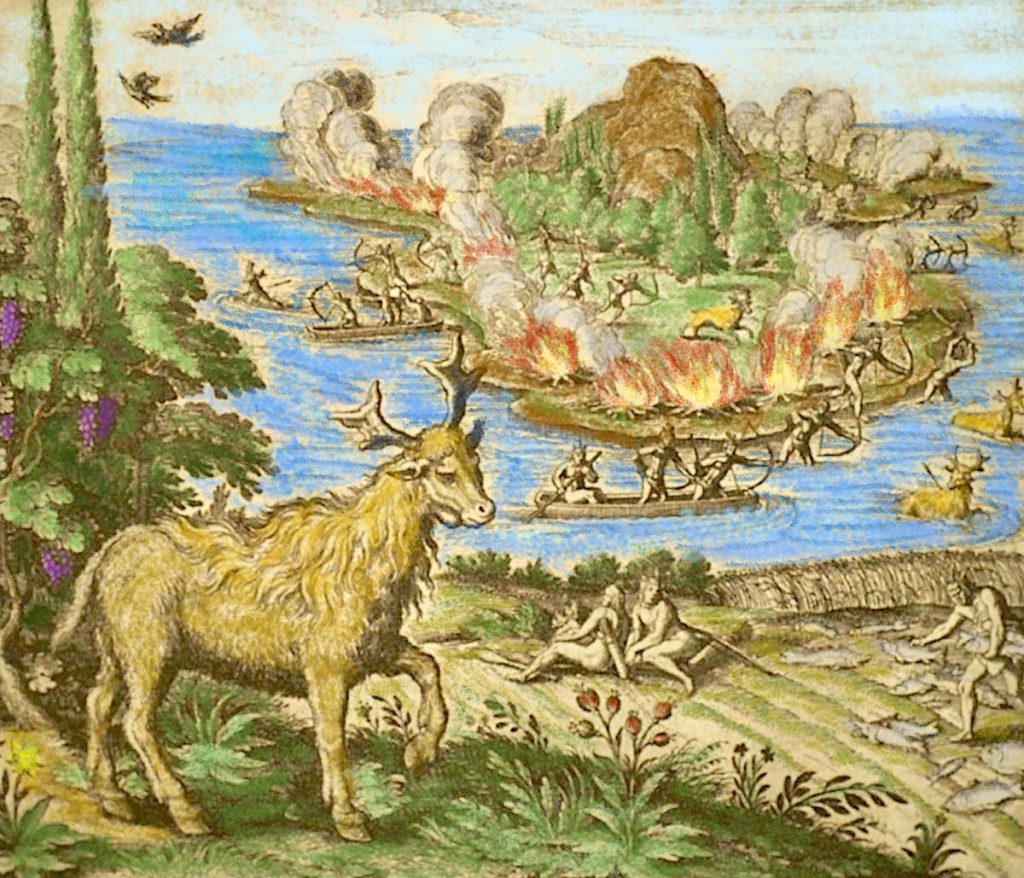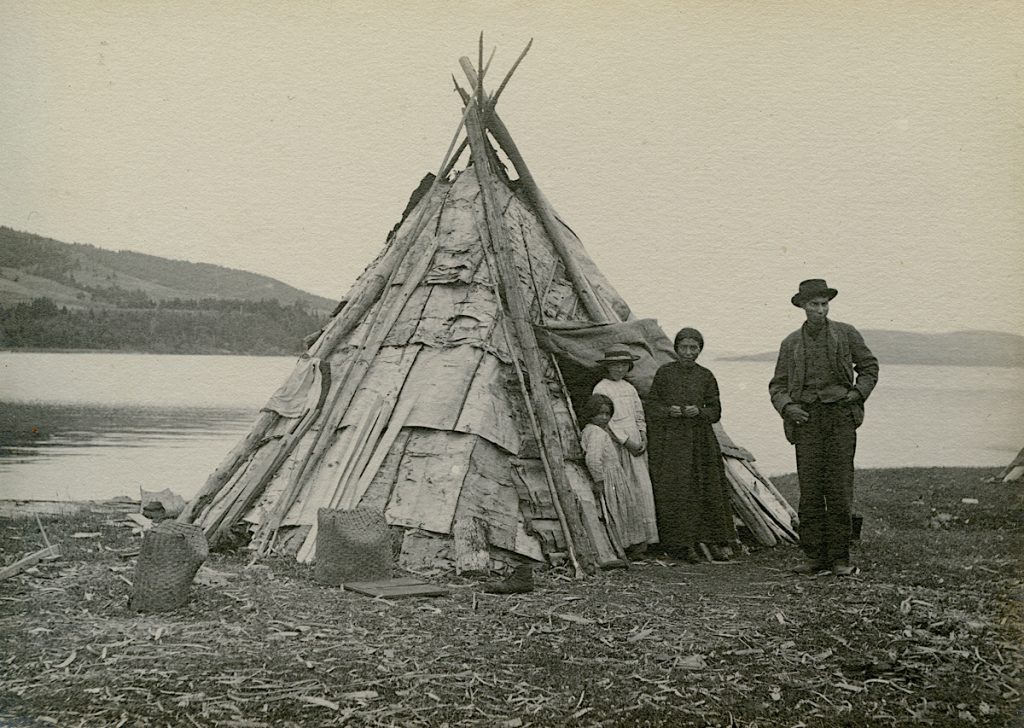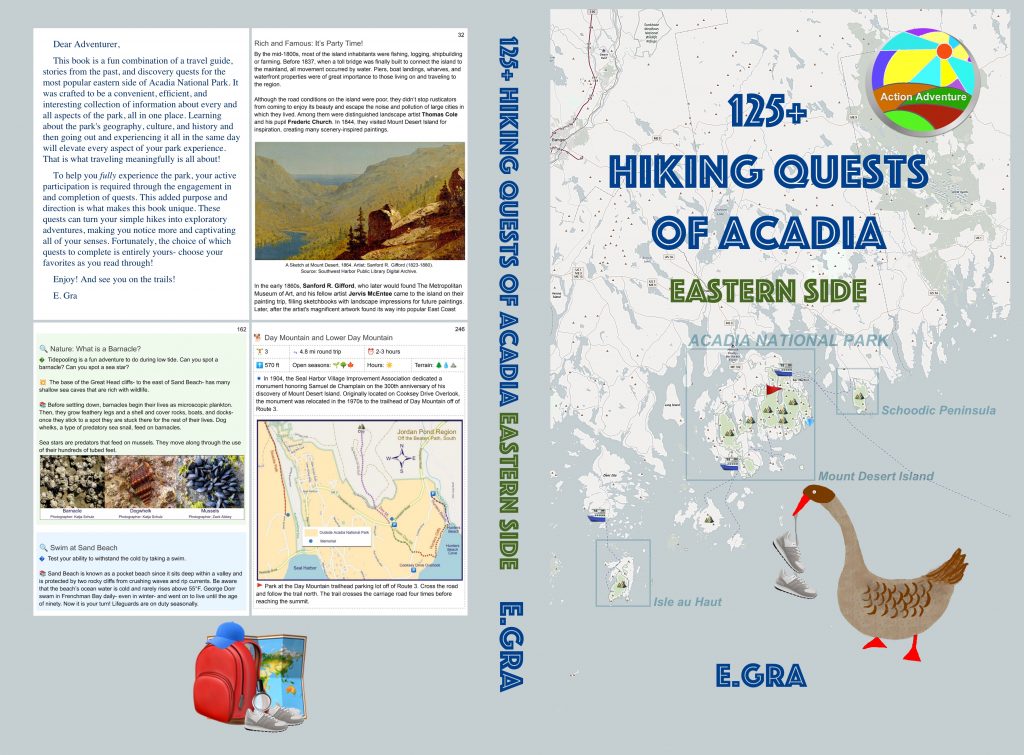- Life is dangerous or How make the most of your surroundings.
The Wabanaki Native Americans have seasonably inhabited the Mount Desert Island for at least 12,000 years. Every year, after spring planting of corn and pumpkins, Penobscot tribe from territories as far as Massachusetts to the south and Newfoundland to the north left their fields and old members behind and came to Mount Desert Island to trade, hunt, build new birchbark canoes and get married. At the end of the summer, they returned back to their villages for the harvest.

Source: Public domain, via Wikimedia Commons.
When first settlers from France landed on Mount Desert Island in 1613, the Wabanaki camped in what is today Northeast Harbor. The chief of the tribe, Asticou, welcomed the Jesuit missionaries and helped settle them across Somes Sound. Unfortunately, the mission didn’t last long, as the British Navy was ordered to raid all French settlements, in order to prevent fur trade competition. English naval officer, Sir Samuel Argall, known most prominently for his kidnapping of Pocahontas just a few months earlier, led the raids. The settlement destruction followed by one hundred and fifty years of competition among English and French.
The first English settlers came in 1762. During summer months they shared the island with the Wabanaki people, as they always camped nearby. Small kids especially enjoyed the interactions as the Wabanaki were teaching them how to make snowshoes, a scoop net for fishing and other survival skills. From the 1860s, some families encamped near Bar Harbor. They sold seal skins, ash and birch bark products, porcupine quill baskets and beadwork to settlers and summer visitors.
When the Mount Desert Island had become a haven for the rich and famous, the Wabanaki adjusted. They amused visitors with guided birchbark canoe excursions around the harbor and were highly sought after as hiking and fishing guides. They also learned to put on a show, inviting guests to ceremonies where they would dress in traditional clothing and tell legendary stories, and gave themselves flashy names such as Big Thunder- a very popular guide in Bar Harbor at that time.
- Anyone can improve our reality or How a physician left us a treasure.
Dr. Robert Abbe, a physician from New York, was fascinated by the Wabanaki people’s history. He enjoyed listening to their legends and collecting early Native American artifacts in the Frenchman Bay area. In 1926, he founded Robert Abbe Museum of Stone Age Antiquities to display his wide collection. The museum’s initial focus on archaeology was soon expanded to include ethnographic materials from later centuries. Over the years, the museum acquired an extensive collection of traditional Wabanaki crafts. As the exhibits expanded, a second location was opened in Bar Harbor village. In both museums one can take in about 12,000 years of Native American culture and history that took place in the state of Maine.

Source: Southwest Harbor Public Library Digital Archive.
- Meet a Wabanaki
Some Wabanaki people continue to live on Mount Desert Island, actively participating in board meetings at the museum, performing in exhibitions, and giving craft demonstrations. Every summer, they organize Native American Market to sell their handmade crafts. If you are lucky to be in town during this multi-day event, you are in for a treat. The market can be found at the College of Atlantic on 105 Eden Street. Visit Abbe Museum website for exact dates. And, even if you miss the market this year, stop by the Abbe Museum for some fun performance or demonstrations, and for a chance to meet a Wabanaki.
Did you like my quest? Do you want to know more about fun and meaningful quests while visiting Acadia National Park? Then, check out my book available on Amazon as paperback and Kindle editions. Buy a book, change a life!

Copyright © 2022 by E.Gra. Unless otherwise noted, all rights reserved. Unless otherwise indicated, no part of this work may be reproduced, or transmitted in any form or by any means without the author’s prior written consent.
